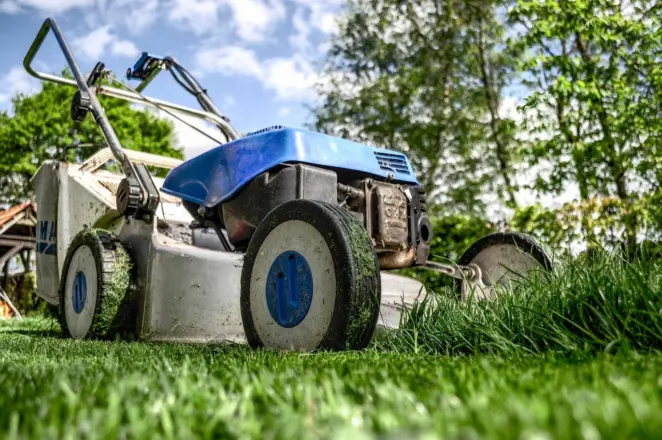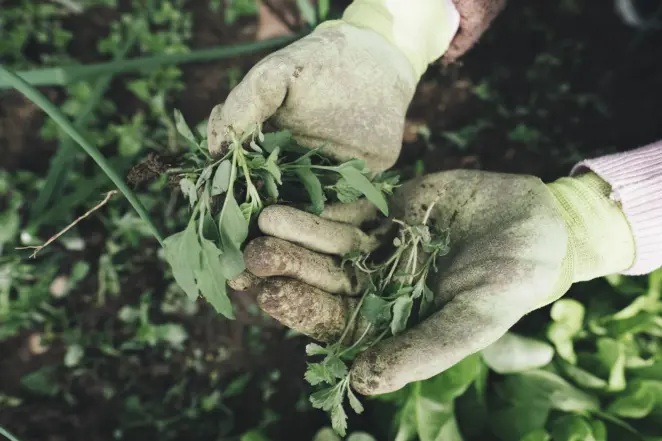Gardening for Beginners
If you are new to gardening, the amount of things you need to know may feel daunting and confusing, but not to worry!
The expert gardeners at Online Turf have created a wealth of information, guides and video tutorials in our knowledge base where you can find everything you need to know about lawn care, pests and more.
Here are some of the basics you should learn before beginning your very first gardening project.
Tools you will need:
There are many tools that you will need as a gardener for specific gardening tasks, below is a list of the most common ones that are a must have in any gardeners shed;
- Lawn mower & strimmer:
An essential for any kind of lawn maintenance. Regular mowing with strimming the outside edges where your mower can’t reach will make a huge difference to any garden and make it look much tidier.
There are electric and petrol powered mowers on the market, both are very effective but for larger gardens you may want to consider going petrol powered.
For more information, see our mower buying guide.

- Trowel
The simple tool will help you dig small holes in the ground ideal for removing pesky weeds or planting your very own flowers - Wheelbarrow
Makes moving heavy garden items around much quicker and easier than it would be otherwise. Wheelbarrows are a must particularly for larger gardens - Pitchfork
Otherwise known as a garden fork, it is a handy tool ideal for a wide array of jobs. - Rake
A simple garden rake will help you keep your garden clean and tidy by removing fallen leaves and can even remove moss build-up on your lawn. - Shovel & Spade:
Ideal for any digging and moving earth.
Planning Gardening Projects Ahead:
The key to any successful gardening is planning ahead what you want to achieve.
Gardening projects take time and can take a fair amount of money to achieve your dream garden complete with features.
When considering what projects you may want to undertake in the future, take into account where the sun reaches and what you realistically can grow by learning about the different levels of shade.
Understanding where and when the sun reaches in your garden can help you pick the perfect spot to sit out in the garden during summer evenings and find the best place for any plants and vegetables you want to grow.
Seasonal Tasks:
Spring:
Depending on how harsh the winter was, you may have some plants to replace in the garden. Not to worry! If you have any gardening projects planned for the year, spring is the best time to begin. With mild temperatures and more sunshine from the days growing longer, it is a great time of year to get going.
Summer:
Undoubtedly the best time of year to spend time out in the garden, the summer does have its own set of challenges when maintaining the garden due to the heat. Keep an eye on the weather, it is easy to forget when the last rainfall was and ensure you give your lawn and plants a deep watering to prevent those roots drying out. On the same note, perennial weeds are competing with your plants for resources so remove them as they sprout up.


Autumn:
When autumn arrives and the leaves begin to fall, now is a good time to get all of your plants ready for winter. With all of the waste, it could be a great time to start your own compost heap which will be ready by next spring.
Winter:
As temperatures drop, many plants become dormant and grow at an reduced rate. Things like a the garden lawn will likely not need a mow now until the spring time. Winter is a good time to repair and maintain all of your tools such as a lawn mower so you can be ready to go as soon as the spring comes around once again.
For more in depth information: Check out our seasonal gardening blogs for some of the most important tasks you will need to undertake all year round.
How to Plant:
Whether you want some potted plants or something to grow in your flower beds, you will need to know how to carefully plant things in your garden. It’s actually easier than you think, but there are a few mistakes that beginners can often make.
One shortcut you can make instead of growing straight from seed is to buy young plants from a supermarket or garden centre. You can get a huge variety of plants that will come in small plastic containers ready to be planted at home.
- Dig a small hole in your pot or flower bed where you want to plant your specimen. One of the most important things to remember is to not plant too deep. This can create a well that collects water and can cause the roots to rot due to being overly exposed to water. Just ensure that the top of the plant should be level with the surrounding soil.
- Gently remove any plastic packaging or containers taking care to not destroy any roots and place it into the hole.
- Fill the hole with any remaining soil to fill the gaps.
- Give the plant some water. A good watering will help your plant adapt to its new environment and remember to water regularly to avoid the roots drying out.
Planting From Seed:
When planting from seed, the process is slightly different depending on the species you choose, the packaging will let you know exactly how deep and how far apart each seed should be sown. You may even need to germinate the seed before planting it into the ground which can be done by wrapping them in a damp paper towel and leaving overnight.


